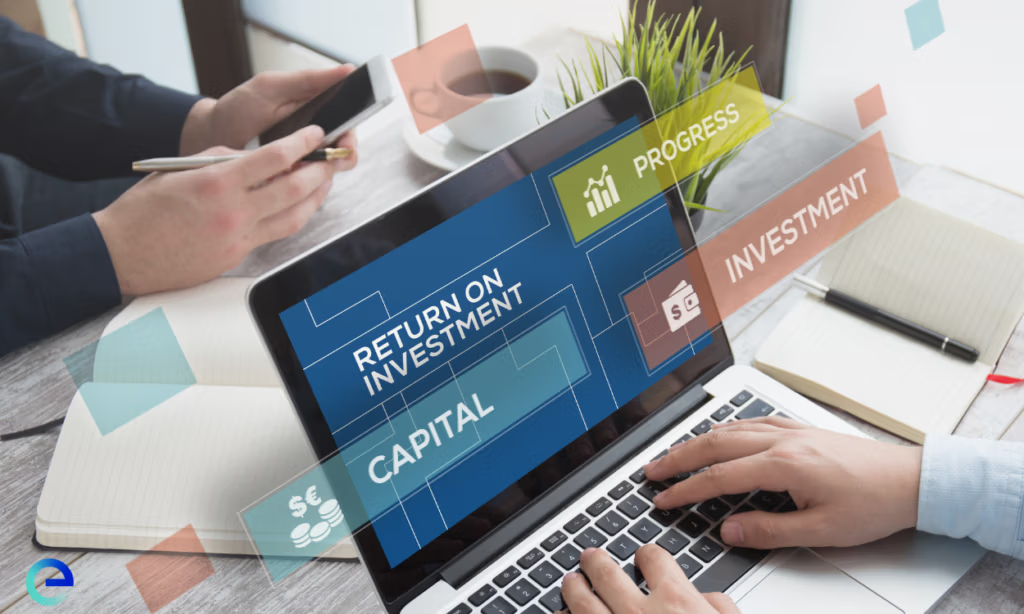
When it comes to socially conscious investing, understanding the true impact of your investments is critical. The Social Return on Investment (SROI) tool is a potent one that enables you to quantify and account for the social, environmental, and economic value that your investments have produced. This methodology provides a comprehensive framework to evaluate the broader effects of your financial decisions, helping you make more informed choices that align with your values and goals.
As we delve into the world of SROI, you’ll discover its applications across various sectors, from public health interventions to social enterprises. As we guide you through the SROI framework, key components are explained, such as stakeholder engagement, input-output analysis, and impact measurement. You’ll learn how to implement SROI in your organization, explore real-world case studies of successful applications, and gain insights into the challenges and benefits of using this approach to measure social value. By the end, you’ll have a solid understanding of how this tool can help you activate the true impact of your investments.
Impact investing has emerged as a dynamic approach to allocating capital, aiming to generate measurable social or environmental benefits alongside financial returns. Unlike traditional investing, which focuses solely on financial gains, impact investing addresses significant societal and environmental challenges through targeted investments . This shift aligns with global efforts, such as the UN Sustainable Development Goals, emphasizing the need to balance societal well-being with economic progress .
The impact investing market has experienced rapid growth, reaching over £561.73 billion in assets under management (AUM) as of 2020 . This surge in interest reflects a growing recognition that social factors, such as employee health and safety, equitable access to services, and robust community support, are not only ethical considerations but also crucial to long-term financial performance .
Social Return on Investment (SROI) has become an essential framework for quantifying the value of social, environmental, and economic outcomes generated by an organization’s activities. By assigning monetary values to these outcomes, it provides a comprehensive view of the impact created per unit of investment, enabling stakeholders to assess the effectiveness and efficiency of projects and initiatives in delivering tangible societal benefits .
SROI measures change in ways that are relevant to the people or organizations that experience or contribute to it. It tells the story of how change is being created by measuring social, environmental, and economic outcomes and using monetary values to represent them . For example, an investment of £0.79 generating £2.36 in social value would have an SROI of 3:1 .
The SROI framework aligns closely with Environmental, Social, and Governance (ESG) criteria, particularly the ‘S’ component. This alignment has become increasingly important in the wake of global events that have underscored the fragility and importance of societal structures . This framework offers more transparency and accountability, enabling investors to gauge the success of their investments in terms of social outcomes and encouraging further investment .
By embracing the framework and its principles, you can navigate the complexities of social value creation, making informed decisions that align profits with purpose . This approach is not just about doing good; it’s about doing well by doing good. The dual focus appeals to a diverse array of investors who seek to align their financial goals with their values, ensuring that their investment capital contributes to the greater good while also achieving financial returns .
To implement SROI effectively in your organization, you need to build internal capacity and understanding. This process involves engaging stakeholders and fostering a new way of thinking about value creation . By incorporating social, environmental, and economic impacts, it provides a more accurate reflection of the value your organization achieves .
To build capacity, consider setting up an SROI planning team, even if you involve external researchers. Gaining management support early on can help secure resources for the SROI analysis, potentially expanding its scope . It’s crucial to recognize that while anyone can learn to complete an SROI, the initial implementation can be challenging. To ensure efficiency and effectiveness, it’s advisable to attend training or seek guidance from experienced practitioners .
When selecting projects for SROI analysis, it’s essential to establish the scope and identify key stakeholders. Start by constructing a comprehensive list of stakeholders affected by your activities. Then, narrow down this list to focus on the most critical stakeholders for your analysis .
To determine what to include in your analysis, engage with your stakeholders directly. Collect information about their goals and objectives, as this will provide valuable insights into the potential impact of your projects . Remember to be transparent about any stakeholders excluded from the analysis by maintaining a stakeholder audit trail.
Integrating SROI into your organization’s decision-making processes allows you to make more informed choices aligned with creating social value . It serves as both a proving and improving tool. It demonstrates and communicates social value, showing how much and where social value is being created .
To integrate SROI effectively:
By incorporating it into your decision-making processes, you can continuously improve how your projects and organization operate, ensuring that your investments create meaningful social and environmental value .
One Acre Fund, a non-profit organization working with smallholder farmers, has successfully implemented SROI to guide resource allocation decisions. Their goal is to generate at least GBP 3.14 in incremental profit for farmers for every GBP 0.79 spent on their core program . This approach has enabled One Acre Fund to maximize social good for their clients and make data-driven decisions in resource allocation.
A Japanese professional soccer team utilized SROI to evaluate the impact of their community soccer and physical activity program. This novel approach shed light on the monetary value of social impact generated by professional sports teams’ CSR activities . The study found that analysis strengthens accountability, improves resource optimization, enhances community awareness, and develops organizational sustainability .
The City of Galveston, in collaboration with the Houston-Galveston Area Council, conducted SROI analysis on various infrastructure projects. These included streetscape and safety improvements, water conservation initiatives, and waste management programs . The SROI analysis provided an objective, transparent, and defensible triple bottom line business case for investing in different infrastructure alternatives .
One notable example is the evaluation of a 1 million gallon per day Water Reuse Facility used for City irrigation and in the chillers at the University of Texas Medical Branch . This project demonstrated how SROI can help cities remain economically competitive while addressing constraints in fresh water supply.
SROI has also been applied at a national level. In England, researchers estimated the SROI of physical activity, finding that the social value of sport participation in 2013/14 was GBP 44.8 billion, with total inputs of GBP 23.5 billion, resulting in an SROI ratio of 1.91 .
The growing importance of Social Return on Investment in today’s socially conscious investment landscape is undeniable. It has a significant impact on decision-making processes, allowing organizations to measure and communicate their social value creation effectively. By applying it, investors and organizations can align their financial goals with broader societal benefits, leading to more meaningful and impactful investments.
The real-world applications of SROI across various sectors demonstrate its versatility and effectiveness. From non-profit organizations to corporate social responsibility initiatives and government programs, SROI provides a framework to analyze and improve social impact. As more organizations adopt this approach, we can expect to see a shift towards more sustainable and socially responsible investment practices, ultimately contributing to a more equitable and thriving society.
